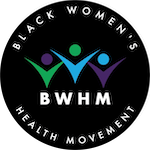Suicide, the Holidays & Our Black Community
If you or a loved one is living with suicidal thoughts or behavior, please call the National Suicide Prevention Lifeline at 1-800-273-TALK (8255) or go to www.suicidepreventionlifeline.org and click to chat.
Words like “merry,” “joy,” and “peace” do not always come to mind, for many during this time of year. The holiday season can bring on feelings of sadness, loneliness, and depression. That makes focusing on mental health, now all that more important. Check-in on yourself and your loved ones. We need to be there for ourselves and others to help prevent dark times leading to self-harm or possible suicidal ideations that can be carried out.
From WebMD: You may have heard suicidal ideation referred to as “suicidal thoughts.” Not everyone with suicidal ideation acts on it. But if you or a loved one, has it, you should get help right away.
While suicide isn’t limited to specific demographics, geographics, social variables, or even a diagnosed mental health condition, Americans living below the poverty level are twice as likely as those living above it to experience serious psychological stress that can result in suicide.
More concerning is the increasing prevalence of death by suicide among the Black community.
- In 2019, it was the second leading cause of death for African Americans (AA), ages 15-24, which suggests that age is a strong contributing factor.
- Since the pandemic, suicide attempts among Black youth have increased dramatically.
- Black men are nearly 4 times more likely to commit suicide than Black women.
- Adolescent Black females are 60% more likely to commit suicide than their white counterparts.
DID YOU KNOW? In America, suicide rates have increased every year since 2006. Use of a firearm is the most common suicide method of the estimated 1.3 million adults who attempt suicide. In at least 1 in every 5 deaths, the victim expressed their suicide intent before following through with their attempt.
According to the CDC, although 54% of the people who died from suicide did not have a known mental health diagnosis, the top contributing factor leading to suicide was relationship issues, followed by a past crisis or the uncertainty of an upcoming event and problematic substance abuse.
Suicide Ideation Triggers & Causes
Who is at risk for having suicidal thoughts? The short answer is anyone. However, there are certain factors that can increase the risk of having them. Those triggers and causes can include but aren’t limited to:
- Substance and alcohol abuse
- Hormone imbalance
- Mental health issues like depression, bipolar disorder or PTSD
- Social/cultural trauma, abuse or interpersonal violence
- Family history
- Chronic illness
- Difficult and uncertain life experiences
- Broken relationships, deaths, bullying, financial and/or legal difficulties
- Food insecurity, housing instability, utility, and/or transportation needs
Intervention is key to addressing the risk factors that lead to suicidal thoughts and ultimately suicide. However, recognizing them is the first, and often the most difficult, step. As a community, we must build up our referral systems to enact intervention and prevention with quick, easy and effective means. Many of our existing systems, especially for Black communities, are cumbersome and difficult to navigate or even find.
How to Maximize Suicide Prevention/Intervention
Social stigma is one of the biggest barriers preventing people from seeking help. Increased knowledge of coping and problem-solving skills and maintaining a strong connection to qualified mental and physical health care specialists can allow you to better manage your personal challenges and/or to support loved ones.
Finding quick and effective care in your community for people who are at risk of suicide is a must. Your community should have strategic resources in place to connect at-risk people with the appropriate services — both for emergent and long-term care.
Helpful Coping Tools
- Distinguish between self-harming behaviors and suicidal behaviors
- Readily recognize stressors that may lead to suicidal thoughts
- Understand the warning signs to begin questioning ourselves and/or others
- Know when to seek care personally and how to persuade others to seek treatment who need help
- Have access to qualified treatment resources
- Maintain an awareness of community services
Warning Signs & Red Flags
- Reckless/risky behavior
- Dramatic mood changes
- Withdrawal from friends, family and community
- Frequent talking or writing about death, dying or suicide
- Making comments about feeling hopeless, trapped, helpless, worthless or burdensome
- Expressing having no sense of purpose or reason to live — “life’s better without me”
- Increased alcohol and/or drug abuse
Where There is Love, There is Hope
If you know someone considering suicide, take their concerns seriously. Let loved ones know you care by listening and asking questions about their plans. Don’t leave them alone. Encourage them to seek immediate care from a knowledgeable professional.
4 Tips if You’re Concerned About a Friend or Loved One
- If someone seems seriously troubled, ask if they’re considering suicide.
- Keep the person at risk safe by reducing access to lethal resources.
- Listen to the person’s needs and remain with them until professional help arrives.
- Help the person connect with ongoing support. Stay involved. Follow up to see how your loved one is doing.
If you need help, please call the National Suicide Prevention Lifeline at 1-800-273-TALK (8255) or go to www.suicidepreventionlifeline.org and click to chat.
Learn more and find resources at www.BeThe1To.com.
Further Reading:
- psychiatry.org/patients-families/suicide-prevention
- Suicide Prevention Resource Center
- Suicide Risk Factors, Substance Abuse and Mental Health Services Administration
- Suicide & Self Harm Injury Data, Centers for Disease Control and Prevention.
- Fact Sheet: Suicide Rising Across the U.S., Centers for Disease Control and Prevention. 2018


